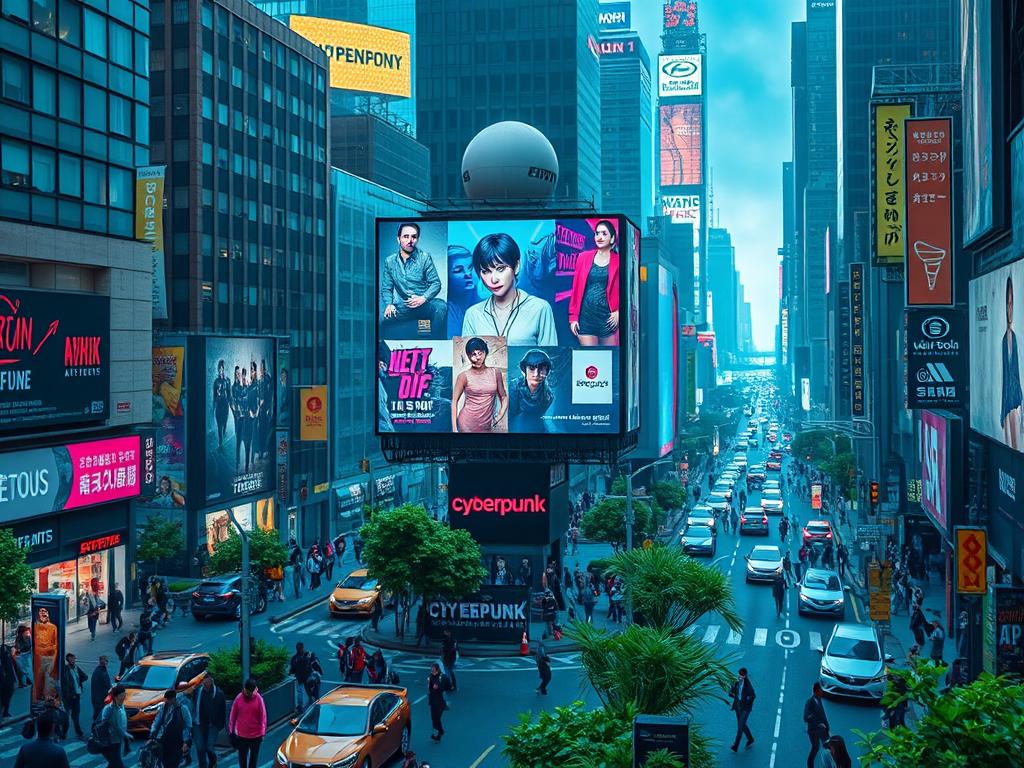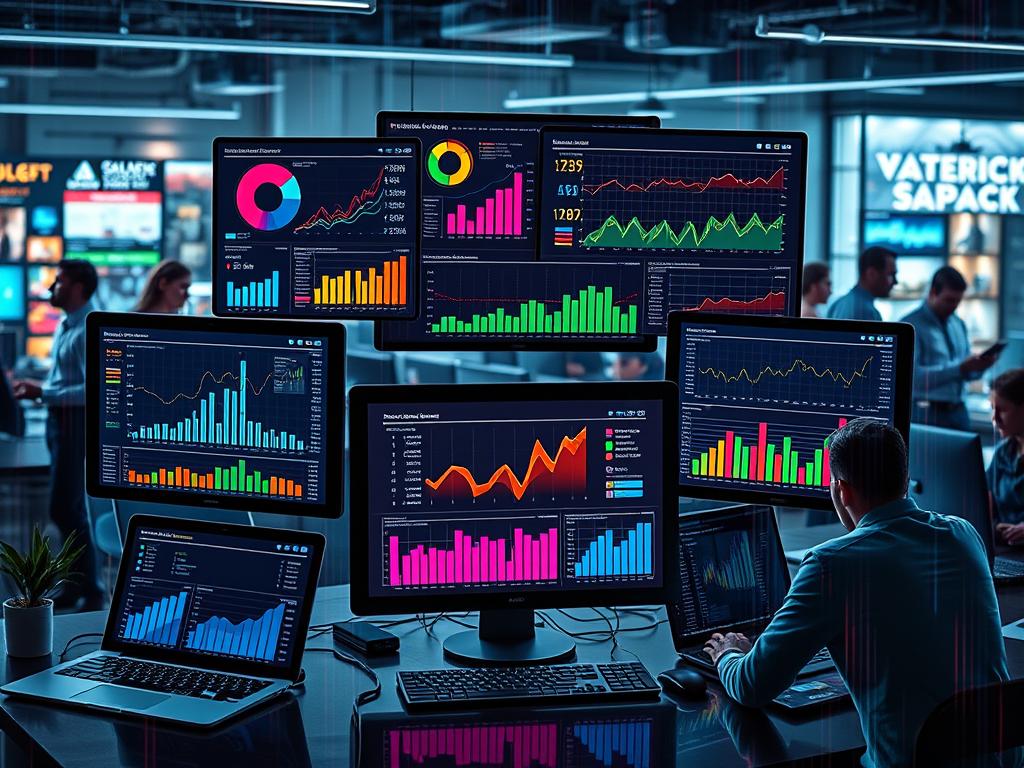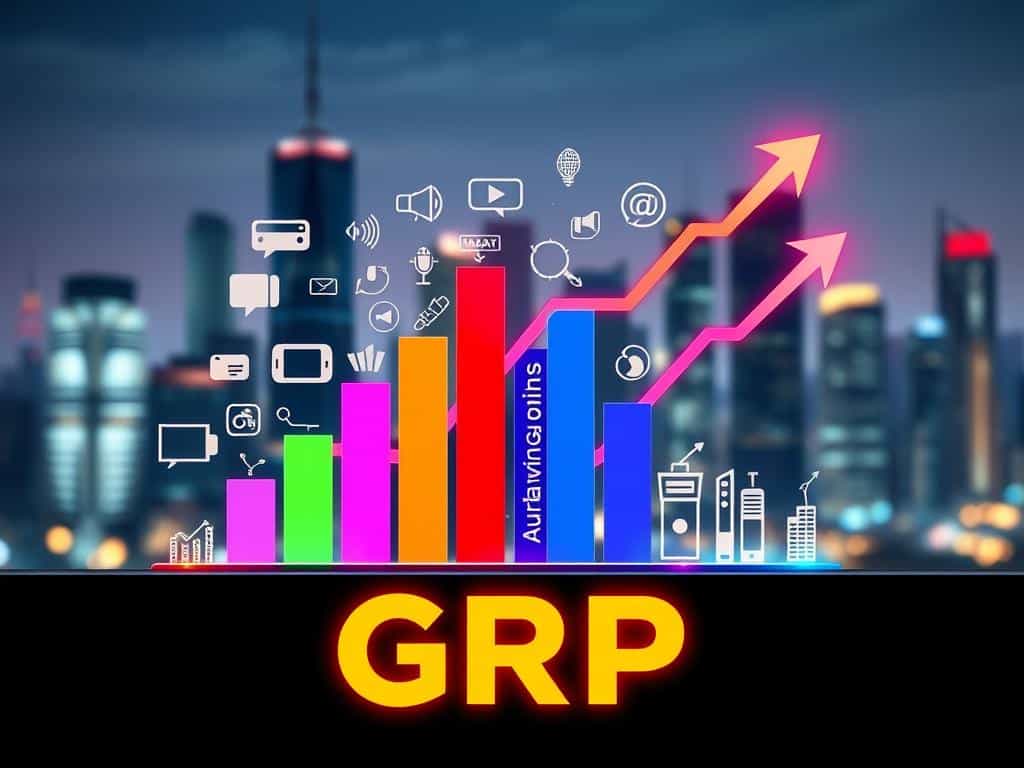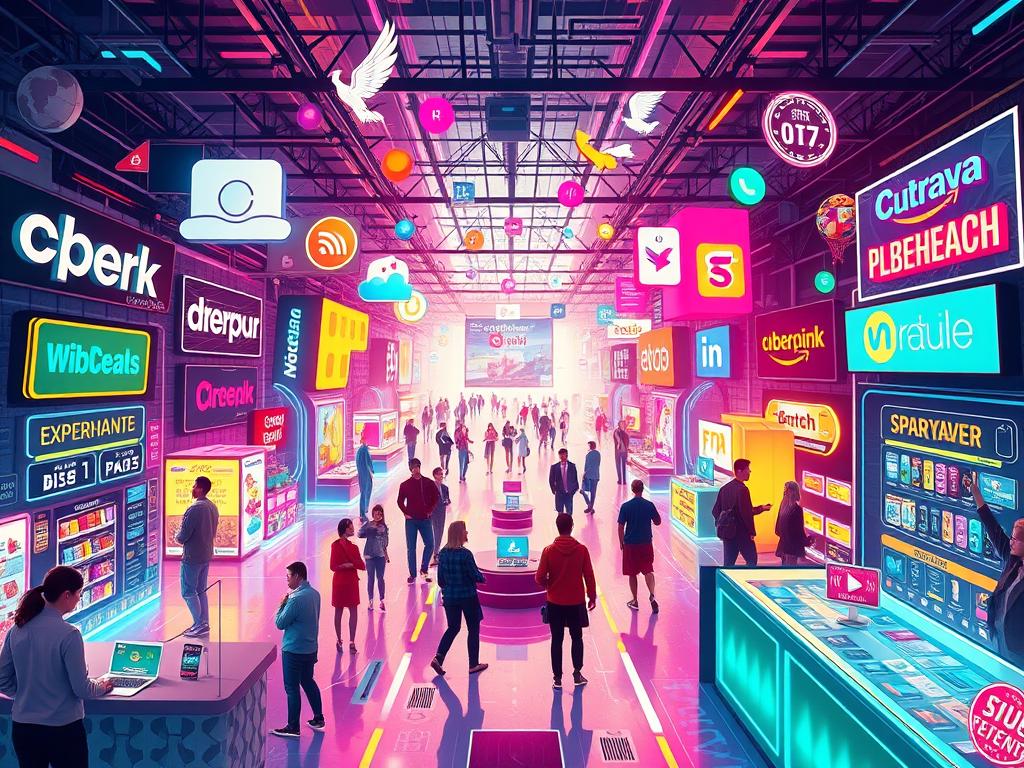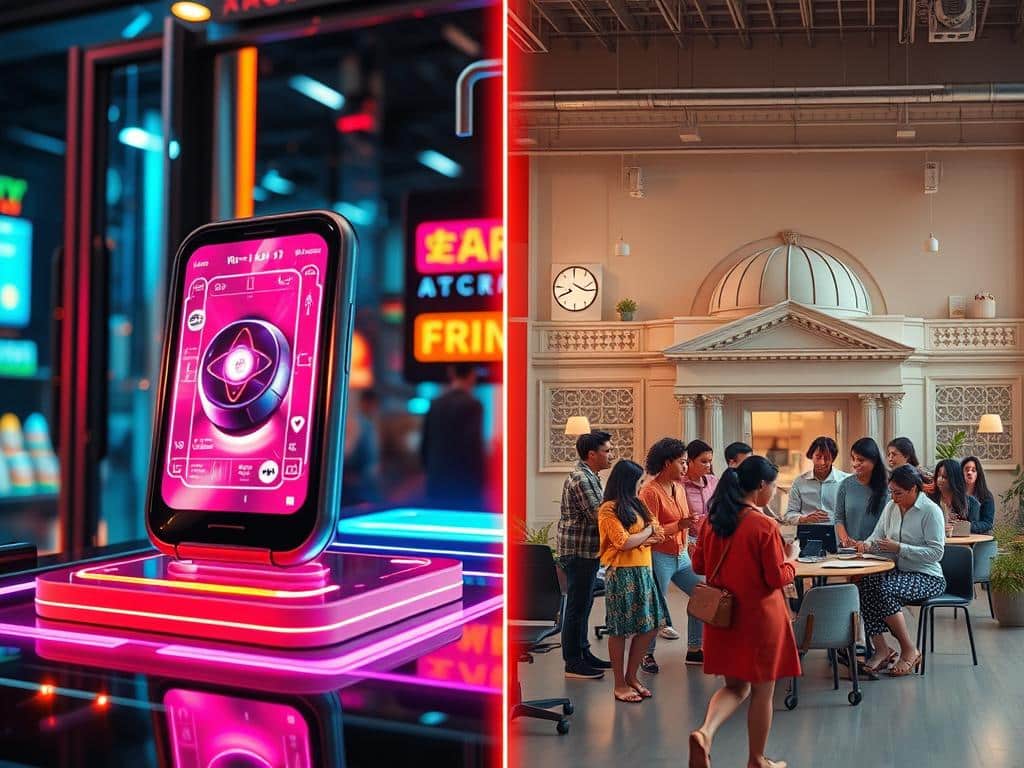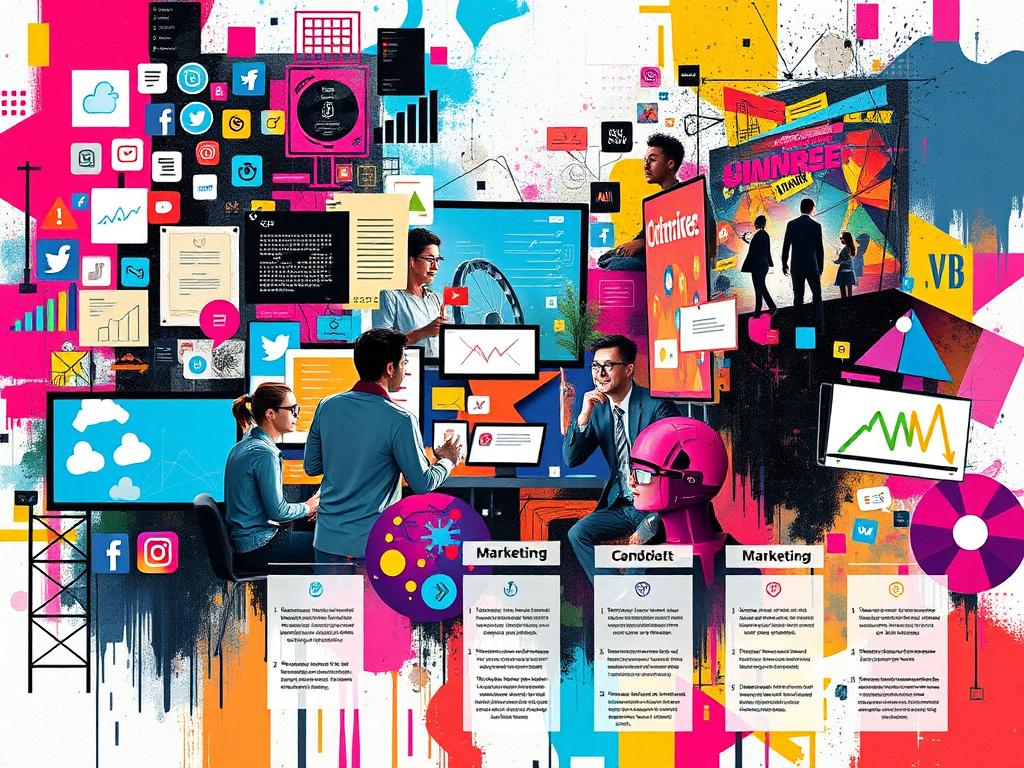As a pivotal marketing strategy, billboard advertising remains crucial for both large-scale brands and small, local businesses. With approximately 350,000 billboards in the United States, their visibility and influence continue to be significant. The Out of Home Advertising Association of America’s data highlights billboard advertising’s remarkable success, with consumer response rates of 38% to 86% for traditional billboards and 46% to 84% for digital billboards.
About 71% of American drivers at least glance at billboards while driving, and 50% find them highly engaging. Compared to other media channels like print, online, and TV spots, billboards often garner a higher consumer recall. Modern digital billboards, totaling over 9,000, offer dynamic messaging and can result in direct online engagements, boosting website visits and social media interactions. This demonstrates the impressive billboard marketing impact and their effectiveness within out-of-home advertising.
Whether through digital or traditional formats, billboards provide substantial reach and conversion potential. Reports suggest digital billboards can convert up to 65% of impressions into actions, affirming a significant return on investment. This highlights the overall efficacy and continued reliance on billboard advertising as a key component of a successful marketing strategy. From enhancing brand visibility to increasing website traffic, the impact remains profound.
The Rise and Continued Popularity of Billboard Advertising
Billboard advertising has cemented its place in the marketing world thanks to its rich history and ongoing evolution. Modern billboards, particularly digital, continue to attract advertisers due to their wide-reaching impact and innovative engagement methods. This section delves into the historical significance and current usage statistics that showcase the enduring appeal of billboard advertising.
The History of Billboards
The history of outdoor advertising dates back to the early 1830s. Billboards gained widespread popularity throughout the 19th century, thanks to technological advancements and urbanization. The introduction of the Model T and the Interstate Highway System in the 20th century further propelled the success of billboards. Furthermore, the Highway Beautification Act of 1965 regulated billboard placement, yet the industry adapted to maintain its relevance. During the digital revolution, billboards embraced change, with digital billboards becoming increasingly popular for their versatile and dynamic nature. This long-standing history underscores the staying power of billboard advertising trends in adapting to societal and technological shifts.
Statistics and Current Usage
Today’s OOH advertising statistics reveal that outdoor ads reach nearly 85% of the adult population in regions like South Africa. This form of advertising continues to witness annual growth rates exceeding 9%, outperforming other media forms such as television, radio, and print. OOH ads also offer a cost-effective solution, with billboards generally cheaper than TV or radio spots due to lower production costs. Importantly, digital billboards introduce additional economic advantages, as they can be managed from a central location, reducing peripheral costs.
Billboards and other OOH mediums have demonstrated impressive engagement, with 65% of viewers taking action after seeing a digital billboard. Furthermore, OOH advertising generated a revenue increase of 6.8%, reaching $1.94 billion in the first quarter of 2024. These statistics affirm the robust presence and persuasive power of billboard advertising trends in today’s market. The vast reach and memorable nature of billboards make them an indispensable part of the advertising landscape, continuing to captivate and convert audiences efficiently.
The Science Behind Billboard Effectiveness
The effectiveness of billboard advertising hinges on a blend of psychology and measurable outcomes. This section delves into the psychological impact of billboards and how their return on investment (ROI) can be accurately measured.
The Psychology of Billboards
Billboard advertising psychology reveals that the sizeable, eye-catching presence of billboards inherently captures attention. The strategic use of colors, such as the red employed by Ginger Media Group for urgency or yellow for positivity, embeds brand messages into consumers’ minds effortlessly. These spontaneous visual stimuli trigger memory and recognition, leading to higher brand recall and engagement.
Through smart color choices and compelling designs, advertisers like Ginger Media Group manipulate consumer behavior effectively. For instance, their use of green aligns with eco-friendly messaging, while blue is leveraged to build trust. This careful alignment of visual elements with brand themes significantly enhances the billboard’s impact.
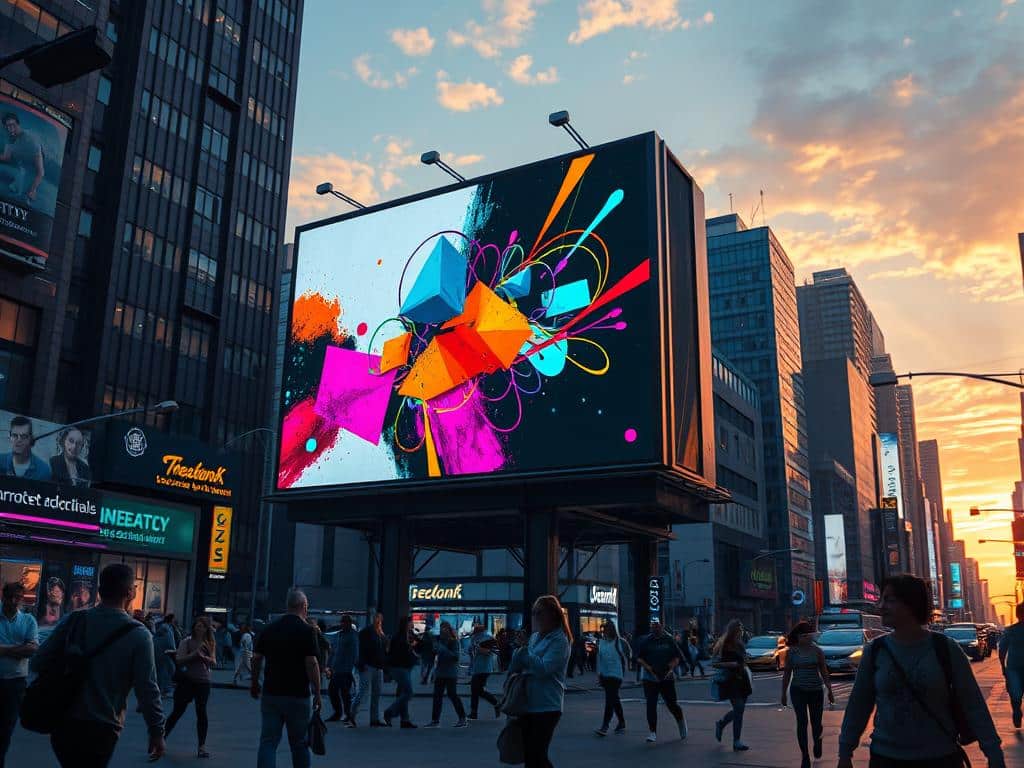
Typography also plays a crucial role in billboard advertising psychology. The use of clean, modern sans-serif fonts for tech campaigns, or sophisticated script fonts for personal touch, ensures the message resonates with the targeted audience. Furthermore, humor and emotional triggers are often employed to forge stronger connections and increase brand recall. The “Spice Up Your Life” campaign is a prime example, utilizing vibrant colors and playful fonts to boost engagement and sales.
Measuring ROI from Billboards
Measuring billboard ROI analysis involves a comprehensive look at consumer responses and subsequent actions. Methods such as traffic studies, surveys, and impression metrics give advertisers insight into campaign performance. A successful billboard advertisement is often marked by an increase in brand engagement and sales volume.
For example, Ginger Media Group’s strategic use of colors and typography in the “Tech Innovations That Wow” campaign, aimed at tech enthusiasts, showcases the power of a well-planned billboard. This campaign not only elevated consumer trust through sleek designs but also saw marked improvements in brand tracking and conversion rates.
Here’s a comparative analysis of various color impacts based on real-world data:
| Color | Psychological Impact | Usage Example |
|---|---|---|
| Red | Urgency, Excitement | Limited-time offers |
| Green | Sustainability, Health | Eco-friendly campaigns |
| Blue | Trust, Reliability | Building consumer trust |
| Yellow | Optimism, Happiness | Creating positive vibes |
| Black | Elegance, Sophistication | Luxury brands/products |
By analyzing data like impressions, click-through rates, and conversions, one can fine-tune advertising engagement strategies and improve billboard ROI analysis. Thus, the intersection of art and science in billboard advertising continues to drive effective marketing efforts.
Traditional vs Digital Billboards
When investigating the comparison of billboard types, it’s evident there are distinct differences between traditional and digital billboards. Traditional billboards have been a cornerstone of advertising for over a century. They are typically situated along highways and busy intersections, offering persistent visibility for an extended duration. In rural areas, the cost ranges from $250 to $550 per month, while in small to mid-size cities, costs can escalate from $1,500 to $4,000 per month. Conversely, digital billboards represent a more dynamic and versatile option in modern advertising.
The benefits of digital billboards over traditional ones are manifold. For instance, digital billboard prices start from around $3,000 per month and can soar up to $10,000 per month in major metropolitan areas, reflecting their advanced technological capabilities and prime locations. Digital billboards have a recall rate of 83% and capture 400% more views than their traditional counterparts, making them a superior choice for ensuring audience engagement.
A detailed comparison of billboard types reveals that digital billboards offer rapid adjustments and optimization with just a few clicks. This flexibility allows advertisers to update messages in real-time, address current events, or pivot marketing strategies swiftly. Traditional billboards, however, remain static for weeks, months, or even years, making them less adaptable and more expensive to alter frequently.
- Traditional billboard strategies involve long-term unchanging displays, primarily reaching daily commuters with a stable, consistent message.
- Digital billboards leverage technological advancements, such as geofencing, to retarget individuals based on their geographical location, enhancing the precision of audience targeting.
- With the ability to track metrics like impressions and conversion rates, digital billboards provide invaluable data that traditional billboards lack, enabling more informed decisions and effective campaign strategies.
In terms of cost-efficiency, both types have their pros and cons. Traditional billboards are less expensive to maintain with a one-time creation cost, whereas the daily expenses for digital billboards range from $25 to $70. Daily visibility times for digital ads are also a factor, with each ad typically showcased for eight to ten seconds, sharing exposure time among multiple advertisers in a 64-second loop.
Ultimately, traditional billboard strategies still hold value in the advertising world, offering long-lasting presence and broad reach. Yet, the benefits of digital billboards are increasingly hard to ignore, especially when considering their superior viewer engagement, flexibility, and advanced tracking capabilities. You need to weigh these factors carefully to determine the optimal advertising strategy for your specific needs and budget.
Advantages of Billboard Advertising
Billboard advertising offers a myriad of advantages that make it a powerful tool in any marketer’s arsenal. Its inherent high visibility and broad reach ensure that your message captivates a diverse audience. Let’s explore some of the primary benefits in more detail.
High Engagement Rates
Billboards command attention. 71% of Americans say they often look at the messages on roadside billboards intentionally. This level of engagement is unmatched by many other advertising mediums. The large sizes of billboards, ranging from 12 feet by 24 feet to as large as 20 feet high by 60 feet wide, contribute to their billboard high visibility and viewer retention. Moreover, digital billboards enhance this engagement further by changing messages based on the time of day, which results in an ad message recall rate of 83%.
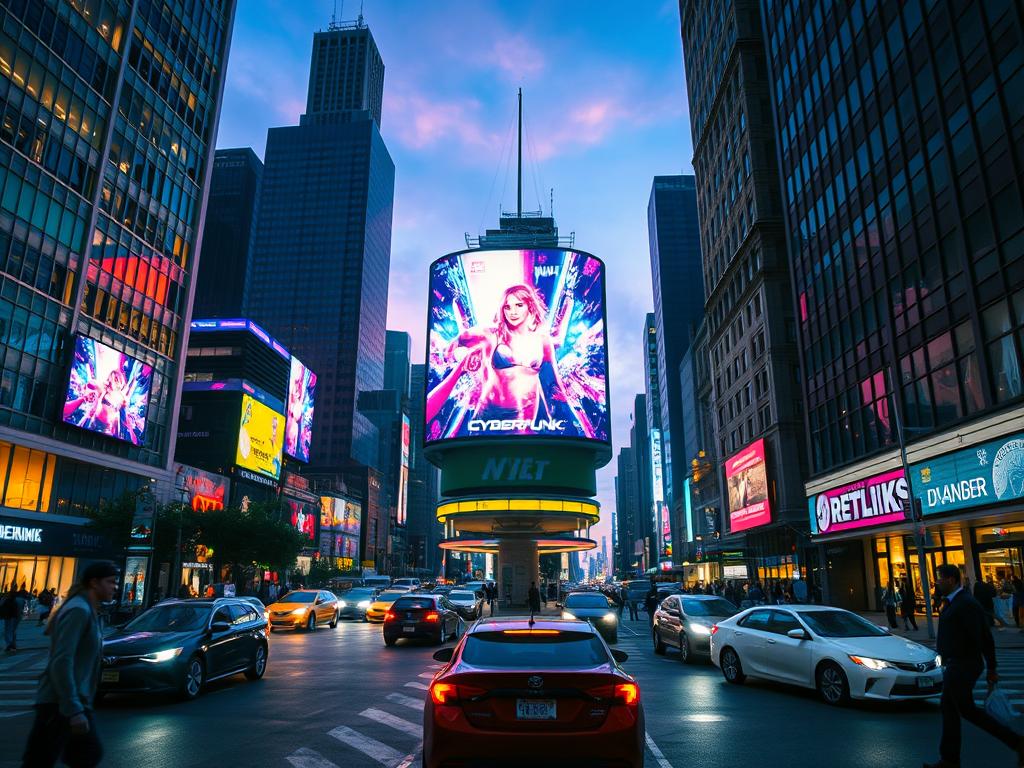
Cost-Effectiveness
The OOH advertising cost-benefit is highly favorable for brands, especially for smaller businesses looking to maximize their advertising budgets. Billboards offer a lower cost per thousand impressions compared to other forms of advertising like television. Their strategic placements in high-traffic areas mean that a single billboard can generate thousands of impressions daily, providing exceptional value. This is evident in the data showcasing that consumers see the same billboard message multiple times, leading to increased brand familiarity.
Capturing Mobile Audiences
Targeting mobile users through billboards is an increasingly effective strategy as nearly 97% of Americans own a cell phone. As more people engage in online searches and actions while on the move, billboards become a critical touchpoint. For instance, almost 71% of Americans intentionally look at billboards while driving, and 32% visit a business within a week of seeing a billboard ad. The integration of QR codes and call-to-action prompts can convert on-the-spot interest into immediate online interaction, fostering greater engagement and instant conversions.
| Billboard Size | Engagement Rate | Cost Per Impression |
|---|---|---|
| Poster (12×24 feet) | 71% | Lower than TV ads |
| Large Billboard (20×60 feet) | 83% (digital) | Exceptional value |
How Effective Is Billboard Advertising: Assessing the Impact
Evaluating billboard campaign success goes beyond merely observing the physical presence of advertisements. Performance indicators such as sales increases, brand awareness, and website traffic are essential metrics that gauge the overall effectiveness of OOH media. According to Nielsen, reaching a 1,000-person audience online could cost up to £15, while achieving the same through OOH advertising might only cost half that amount. It highlights the cost-effectiveness of this medium.
Billboards have consistently demonstrated their influence on sales and consumer actions. Statista predicts a 31.5% increase in spending on OOH advertising from the previous year, showing the growing trust in this format. An interesting statistic from Nielsen indicates that 46% of individuals sought out a product online after initially seeing it on a billboard, emphasizing OOH’s ability to drive online engagement.
The impact of billboard advertising on sales is highlighted by research from the OAAA. It revealed that for every dollar spent on billboards, an average of $5.97 in sales is generated. These figures undeniably affirm the return on investment billboard campaigns can yield.
Effectiveness of OOH media extends to brand recall and social interaction as well. Arbitron reports that 71% of people recalled seeing a billboard in the past month, and 56% discussed interesting or humorous billboards with others. This data points to a powerful mix of visibility and conversational value, fostering deeper consumer connections.
When assessing the overall impact, it’s vital to integrate billboard campaigns with digital strategies. This multifaceted approach can amplify reach and enhance consumer engagement. The combination of billboard exposure alongside digital ads can promote offline-to-online actions, enhancing the campaign’s effectiveness. Accordingly, research shows that 58% of people who spend more time out-of-home tend to perform more online searches, underscoring the complementary nature of these channels.
To illustrate the positive correlation between OOH advertising and consumer engagement, let’s delve into key metrics used for evaluating billboard campaign effectiveness:
| Metric | Description | Impact |
|---|---|---|
| Impressions | Combination of traffic and demographic data | Quantifies reach and engagement |
| Sales Uplift | Increase in sales post-campaign | Directly correlates with billboard exposure |
| Brand Recall | Percentage of consumers remembering the ad | Builds brand awareness and recognition |
| Online Engagement | Increase in website or social media traffic | Indicates cross-channel influence of billboard |
The effectiveness of OOH media lies in its ability to harmonize with other marketing channels, creating a potent and cohesive strategy. By thoroughly evaluating these metrics, you can gain a comprehensive understanding of your billboard campaign’s success and its impact on sales.
Are Posters as Effective as Billboards for Advertising?
Posters and billboards both play essential roles in advertising. Posters, when placed in the best locations for poster advertising, such as high-traffic areas, can captivate audiences effectively. While billboards dominate highways with their massive reach, strategically placed posters deliver a more direct, localized impact, making them an equally impactful advertising tool.
Conclusion
In summary, billboard advertising demonstrates a unique and robust ability to reach and engage audiences on a grand scale, with proven effectiveness across both traditional and digital platforms. From their origins to their present-day utilization, billboards have remained a cornerstone of the advertising world. Their strategic value of billboards lies in their visibility, recall, and versatility in targeting and messaging, ensuring that your message reaches a broad and diverse audience.
The effectiveness of billboard advertising is underscored by compelling statistics. Despite a significant 31% revenue decrease in Q4 of 2020 due to COVID-19, the industry rebounded in 2021, reaching $8.72 billion in the US. This upward trend is expected to continue, with outdoor advertising revenue projected to hit $10.5 billion by 2024. With over 351,000 billboards currently in use across the country, including various formats like digital boards and wallscapes, the strategic value of these advertising tools cannot be overstated.
Looking ahead, the future of billboard advertising remains promising. Approximately one in three people engage with digital OOH billboards by visiting a website or conducting a related search, and an impressive 82% recall seeing a digital OOH ad over a month ago. Advertisers report high satisfaction with their ROI, with static boards boasting close to 40% ROI and digital boards around 38%. As the landscape of advertising continues to evolve, understanding and leveraging these benefits will be key to maximizing billboard campaign results and securing a competitive edge in the market.


